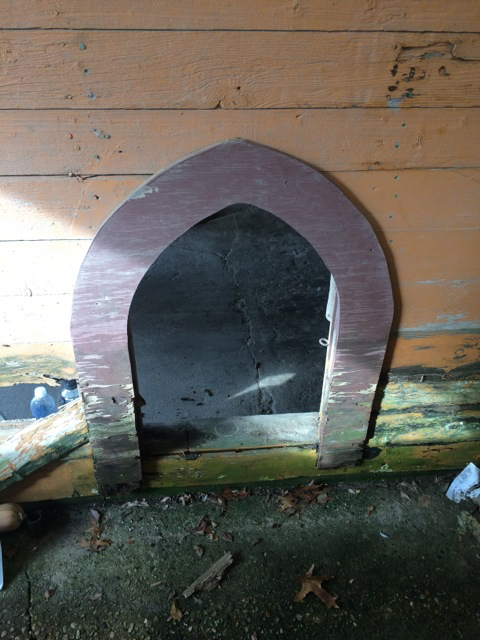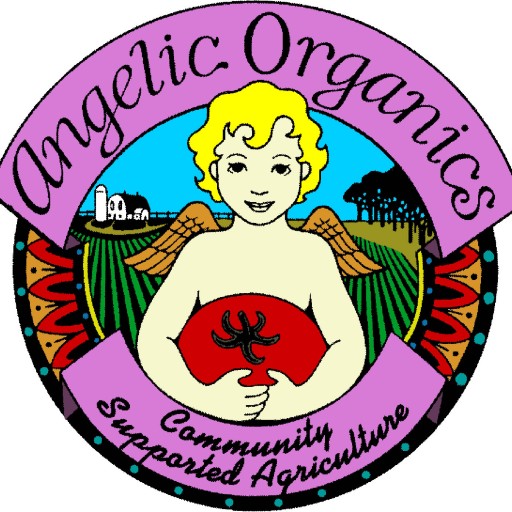Farmer John Writes: Imagine That, Part 1
Harvest Week 23, Week 3 of the Extended Season, November 9th – 12th
This May Be Your Final Delivery of the Season
If you have a 2-box half extended season share that is delivered on the “odd week” schedule, this week’s delivery is your final box of the 2016 season. Thank you so much for being a shareholder with us this year.
Please Fold Your Boxes Properly and Return Them
Please carefully flatten your box and return it to your delivery site. On your last pickup day, we suggest you transfer your box contents to your own container, and leave your CSA box at the site. If you receive home delivery, place your empty box(es) in the location where your box is delivered.
Your Box This Week – Saturday, November 12th
Please note: this summary is written before we pack your box—be aware that some guesswork is involved. At times, a bit of improvisation is required for selecting the contents of your share. As always, be sure to thoroughly wash all of your vegetables.
- Brussels Sprouts
- Potatoes
- Spinach (in bag)
- Kale Tops
- Mizuna (in bag)
- Chard
- Brussels Sprouts Tops (maybe)
- Bunched Choi
- Sweet Peppers (slightly frost damaged)
- Eggplant (maybe, also slight frost damage)
- Garlic
This Week’s Box
It’s been interesting to observe the baby greens grow during this late part of the season. When I realized that our Brussels sprouts were not going to yield well—these sprouts typically provide a lot of box volume—we hustled to seed spinach, baby choi, and mizuna. Mizuna was harvested last week; about 4 1/2 weeks after it was seeded. Normally, it would take about 4 weeks from seeding to harvest. We will harvest the remaining mizuna this week.
November Peppers
The final peppers of the season might look a little blotchy from light frost, but we think they’re good enough to give.
Just Imagine
In this first of two installments of Farm News, I will introduce you to the process by which I consider moving Angelic Organics into the future. The process might seem tedious to the reader, but still, I think it is important to share with you, the shareholder, how a farm organism like Angelic Organics actually comes about and moves forward. A similar process, though usually less intricate, is employed for many of the other decisions that guide your farm forward.
For those of you who have visited Angelic Organics, you will probably agree that mostly, the farmstead is tidy, organized and well maintained. There is one area, however, that is ramshackle and chaotic—our post-harvest washing area between the two barns. This area evolved gradually from the early 90’s through today. Actually, it had an earlier incarnation as a facility for hog production.
From The Way We Whir, Written and Performed by Farmer John in San Miguel de Allende, Mexico, Summer, 1984
That year [1969] the farm sounded as dead as the Bonnie Bee [local grocery store that had closed]. I bought 112 pigs to break the silence on the farm. I started Beloit College wearing the faint odor of the dairy barn and graduated smelling like the hogs.
Hogs were a mainstay on the farm. I filled the woods and pastures and barns with lumbering sows and foaming boars and hundreds and hundreds of scampering piglets. I bought beef cattle, Larry gave me a rooster, and the whole place had hubbub again, grunts and moos and squeals and squawks. Pigs frolicked, sows nested, cows roamed, the rooster flapped.

Our Nice Barns Bracket Chaos Today
When the hog operation ended in the early 80’s, there remained concrete feeding and drinking areas that, for drainage, sloped away from the barn (which is now the packing barn) where the pigs had frolicked and slept. I had intentionally made the concrete surface rough when I poured it in the 70’s, so the hogs wouldn’t slip on it and hurt themselves. Because pigs are important (as are all of our other animal friends), and because passage itself is sacred, I even made their doorways to the outside in the shape of gothic arches.

The last pig passed through this archway in 1980.
Ten Years Later
From Did You Kill Anyone Up Here? by Farmer John, 1993
On May first, [1990], I plowed. The tractor howled and bucked. Sparks flew from the exhaust. Dirt swished under the shares. I was farming again. It was May Day, the day when, according to the Druids, spring finally wrestled winter to the ground. [We] farmed hard, early to late, day after day, summer through fall…. Fluffy kale, wispy carrot tops, climbing beans, pungent arugula, feverish cosmos streaked through the once dormant fields. We were happy in the dirt.
When the farm started up again (for back story, watch the film The Real Dirt on Farmer John), the rough, sloping slabs of concrete I had poured for the hogs were handy for moving vegetables around with dollies (hand carts). The key words here are rough and sloping. When we graduated from handling our small volume of crops in 2 bushel (or less) crates with dollies to large volumes in 20 or 25 bushel bins with pallet jacks, the rough, sloping concrete surfaces were no longer suitable for our new system for handling. We found ourselves regularly replacing bearings and wheels on our pallet jacks. In addition, our coolers had been installed towards the top of the sloping concrete, and sometimes I would watch up to 5 workers heaving and pushing into the cooler a pallet jack loaded with a column of two 20 bushel bins. (For your reference, a 20 bushel bin full of carrots weighs about 900 pounds.)

Rough concrete, so the hogs wouldn’t slip and fall 40 years ago
Escher
Over the years, we poured more concrete in this area to connect the two barns, so we could move vegetables about for bagging, grading, washing, and packing. We made the new expanses of concrete smooth and relatively flat; however, we were still stuck with about half of the paved area being sloped and rough from the era of swine. We also gradually added a hodgepodge of roofs, to protect our crew and crops from the sun and rain. The whole area spanning the space between our two grand barns is an eyesore—an assortment of connected shelters sitting on top of an array of connected planes of concrete with varying pitches, much of it rough—an Escher-like expanse, mingling the former needs of hogs with the current needs of vegetables.

The no-slip walkway from which I observed the pigs in the 70’s.
Not only did I not want the pigs to slip and fall, I didn’t want to slip and fall either.
I’ll add that even though I made much of this concrete rough when I poured it back when I started hosting hogs on the farm, a lot of the concrete has turned to rubble—requiring us to frequently replace wheels and bearings on our handling conveyances. In fact, the concrete is now so broken in places that sometimes a loaded pallet jack will simply drop into a hole and stubbornly remain there, until a host of husky crew members converge and rock it out of the hole.

Rubble
Since upgrading our handling system to bins and pallet jacks, we have added in electric pallet jacks and a fork truck for moving vegetables about. The electric pallet jacks struggle over the rough, crumbling floor surfaces, sometimes also getting stuck in the rubble. Even with routine maintenance and wheel replacement, these electric pallet jacks often squeak, rattle and squawk their way about the post harvest area, their bearings and wheels in protest to building a vegetable farm on top of a hog operation.
You might be surprised that we have been enduring this inconvenience for so many years, given how the rest of the farm is so productive and efficient. The reason is that there is really no fix in between the concrete patching we have been doing over the years and a complete revamp of the whole area. Primo and I have pondered solutions over the years. Pondering a solution to this challenge is a boggling process. To achieve a proper outcome, the concrete needs to be level, and it needs to connect to the floors of the two barns.
Multi-Purpose Paradise
This fabulous post-harvest compound would offer not only a paradisical post harvest facility, but also a transitional space in early spring for our transplants in between their balmy greenhouse beginnings and their final destination in the fields, where they are at the mercy of the elements. It would be an enormous upgrade of our ability to properly harden off the transplants. We would be able to fit at least 6 wagons in this space, with about 10,000 transplants on each wagon.
It would also provide shelter for machine storage in the winter.
Coming Next Week: Imagine That, Part 2
Let us Know
Let Shelly know anything you’d like to share about this week’s box at email hidden; JavaScript is required. Please note the week and day of delivery, your site, when you picked up your box, and any comments about your box.
More from Shareholders
Visit us often at www.facebook.com/angelicorganics, where we post exciting farm developments regularly, and shareholders post recipes, tips, and photos.
Warmly,
Farmer John




[…] Imagine That, Part Two Farmer John Continues to Ponder a New Post-Harvest Facility (See last week’s Farm News for Imagine That, Part 1). […]